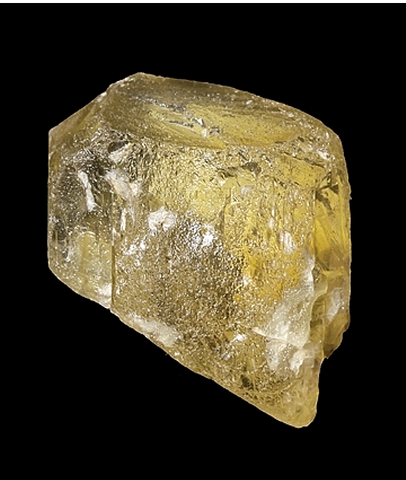BYTOWNITE
Class : Silicates
Subclass : Tectosilicates
Crystal System : Triclinic
Chemistry : (Na,Ca)(Al,Si)4O8
Rarity : Common
Bytownite belongs to the group of plagioclase feldspars of which it represents a calcic term of composition (Ab30-An70 to Ab10-An90). It is a very widespread constituent of basic magmatic rocks (diorites, basalts, andesites, norites...) as well as in anorthosites and certain amphibolites. Its name is linked to its locality of discovery : Bytown (former name of Ottawa, Canada). Bytownite sometimes occurs as polysynthetic twinned tabular crystals in the pegmatoids of these basic rocks, but mostly as lamellar masses of greyish-white to pale brownish-purple hue. It is occasionally used as a gemstone and as an ornamental stone.
Main photo : Bytownite from Dorado Mine, Nueva Casas Grandes, Chihuahua, Mexico © Rob Lavinsky
Bytownite in the World
Twinning
The twins are common around [010] or perpendicular to {010}, giving polysynthetic streaks on {001} or {010} ; many other single and multiple contact twins exist.
Fakes and treatments
No fake identified for this mineral species. But can potentially be diffused just like andesine.
Hardness : 6 to 6.5
Density : 2.6
Fracture : Irregular to conchoidal
Trace : White
TP : Translucent to transparent
RI : 1.563 to 1.583
Birefringence : 0.010 to 0.11
Optical character : Biaxial (+/-)
Pleochroism : Low
Fluorescence : None
Solubility : Hydrochloric acid
Magnetism : None
Radioactivity : None


